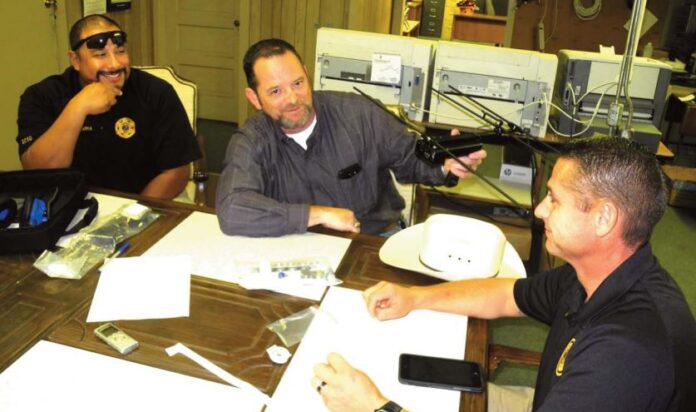
ARTESIA — The Eddy County Sheriff’s Department is pleased to announce Project Lifesaver International, a new personal locating system helping to address wandering and elopement for loved ones from all angles by introducing the PLI5000.
The PLI5000 is the newest radio frequency based tracking receiver that will be available to members and caregivers as an option to locate their loved one should they have a wandering incident.
“We’ve been working on this for about a year and a half now, on getting this equipment ready and the training implemented to be able to release this life saving equipment to the public,”
ECSO Chief Deputy Mark Cage said today. “I started working with Alzheimer’s New Mexico, who purchased the more than $20,000 worth of equipment for Eddy County residents, and now we are ready to get them the help they need.
“We have used this in the past, but this is an updated version, and has been used by the Sheriff’s office to locate people.”
The device uses radio frequencies transmitted by a wrist band or ankle band. The ECSO then uses an antenna locator to track the missing person.
Via the antenna, the person can be found within approximately two to three miles.
Lt. Michael Chavarria is the supervisor of the program and can be reached at 5758877551, ext. 7105. If a person has a loved one that would benefit from this device, the sheriff’s office urges them to get in contact with Chavarria to set up a home visit, or those interested may visit the sheriff’s office to get signed up for the program.
Lt. Chavarria stressed the program is “free of charge and is available today.”
“The PLI5000 serves as an extension to the tried and true Project Lifesaver radio frequency technology of telemetry which we have been using since the Project Lifesaver program began over sixteen years ago,” said Lifesaver International CEO/founder Gene Saunders. “This offers a resource to help caregivers locate their loved one should they wander, especially in locations that do not have the program or with poor cell coverage.”
The PLI5000, like other Project Lifesaver receivers, operates off the 216 range and will be present for caregivers at one single unique frequency.
The PLI5000 kit will also include one 60 day transmitter, a tester, one year of batteries and bracelets, and an instructional guide.
Citizens enrolled in Project Lifesaver wear a small personal transmitter around the wrist or ankle that emits an individualized tracking signal.
If an enrolled client goes missing, the caregiver notifies their local Project Lifesaver agency, and a trained emergency team responds to the wanderer’s area.
Project Lifesaver is a community based, public safety, nonprofit organization that provides law enforcement, fire/rescue, other first responders, and caregivers with equipment and training to quickly locate and rescue individuals with cognitive disorders who are prone to the life threatening behavior of wandering, including those with Alzheimer’s disease, autism and down syndrome.
Most who wander are found within a few miles from home, and search times have been reduced from hours and days to minutes. Recovery times for PLI clients average 30 minutes — 95 percent less time than standard operations.



